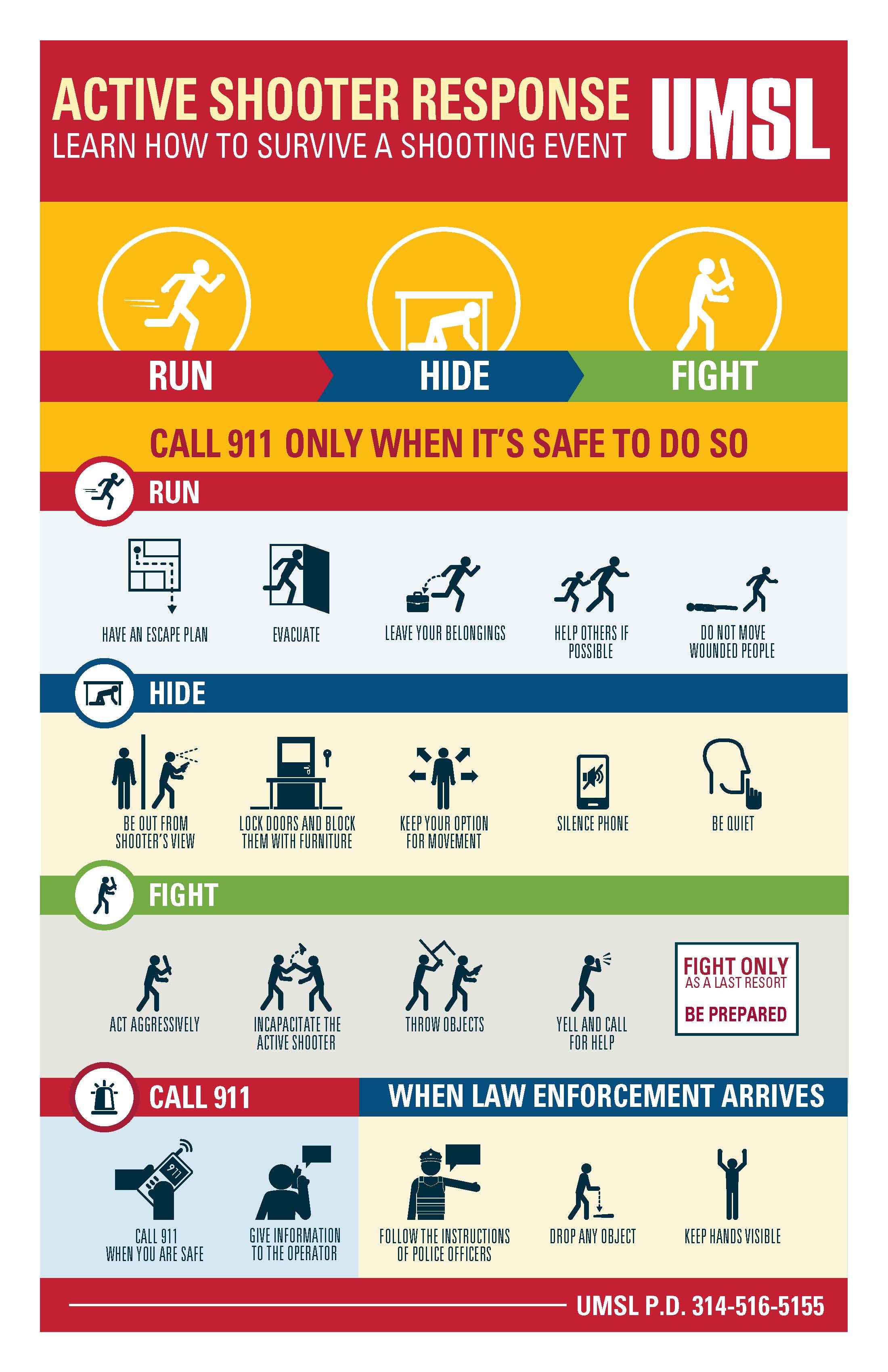The Essential Duty of Energetic Shooter Training in Enhancing Emergency Reaction Techniques in Various Settings
Energetic shooter training has actually emerged as a basic part in refining emergency situation reaction techniques across varied setups, from academic institutions to business atmospheres. The efficiency of such training hinges on various variables, including the particular context in which it is executed and the continuous dedication to enhancement.
Value of Active Shooter Training
In an age noted by raising concerns over public security, the relevance of active shooter training can not be overstated. As cases of weapon physical violence in public rooms proceed to increase, organizations across different sectorsâEUR" universities, offices, and public venuesâEUR" are identifying the necessity of preparing their employees and neighborhoods for such emergency situations. Active shooter training furnishes individuals with important skills and expertise to respond properly in serious scenarios, potentially lessening casualties and conserving lives.
The training not only concentrates on immediate reaction actions, such as discharge and shielding in position, yet also cultivates a culture of understanding and preparedness. By participating in practical simulations and conversations, participants can identify potential susceptabilities within their setting and establish approaches for mitigating risks. Such training enhances communication and coordination amongst team participants and very first responders, making sure an extra unified technique throughout situations.

Key Components of Effective Training
Reliable active shooter training makes up a number of key parts that enhance readiness and reaction abilities. First and foremost, reasonable scenario-based simulations are crucial. These workouts immerse individuals in high-stress circumstances that mimic potential energetic shooter events, permitting them to practice decision-making and physical reactions under pressure.
Furthermore, training must consist of a detailed understanding of interaction protocols. Participants should be fluent in exactly how to relay crucial details to police and fellow people throughout an event. This includes utilizing emergency situation alerts and understanding the pecking order.
Another necessary part is the unification of mental wellness understanding. Training should address the mental effect of active shooter circumstances, furnishing participants with coping techniques and sources to support their psychological well-being post-incident.
Moreover, routine correspondence course are crucial to make sure that skills continue to be sharp and understanding is current. This continuous education reinforces the value of readiness and fosters a society of safety within companies.
Training for Different Environments
Active shooter training have to be tailored to the specific atmospheres in which individuals operate, as each setting presents special challenges and dynamics. As an example, training in a company office will vary dramatically from that in a college, shopping center, or medical care center. Each environment necessitates a tailored strategy that takes into consideration elements such as layout, population thickness, and readily available retreat courses.
In instructional establishments, training programs should highlight lockdown procedures, communication protocols with regulation enforcement, and techniques for safeguarding pupils. Alternatively, in business setups, training may concentrate on discharge approaches, recognizing suspicious behaviors, and utilizing available sources for self-defense or shelter-in-place scenarios.
Additionally, public locations like shopping malls or showing off occasions call for substantial crowd monitoring strategies, with an emphasis on quick action control amongst safety and security workers and local legislation enforcement.
In health care environments, training needs to resolve details official website vulnerabilities, such as the presence of people who may call for instant help. By understanding the unique qualities of each environment, companies can develop effective training modules that improve preparedness and enhance total safety, guaranteeing that individuals are geared up to react appropriately in different crisis circumstances.

Building a Society of Understanding
Creating a society of understanding is essential to boosting security procedures in any environment, as it empowers individuals to recognize possible hazards and react proactively. This society requires constant education and learning, open interaction, and the integration of security protocols into day-to-day regimens.
Organizations should focus on active shooter training as component of their overarching security approach, making certain that all employees recognize the certain risks related to their environment. Normal training sessions cultivate vigilance and knowledge with emergency treatments, encouraging individuals to stay alert to uncommon behaviors or scenarios.
In addition, cultivating a society of awareness includes creating an environment have a peek at these guys where reporting dubious activity is both urged and stabilized. active shooter training. Workers have to feel comfy sharing their problems without concern of retaliation. This can be achieved with clear networks of interaction and encouraging leadership
Furthermore, participating in area partnerships can increase understanding beyond organizational boundaries, promoting a common responsibility for safety and security. Efforts such as workshops, drills, and educational sessions can further boost cumulative watchfulness. Inevitably, developing a society of awareness not just prepares people for potential situations yet also enhances the total durability of the organization against risks.
Examining Educating Performance
While regular training sessions are crucial for readiness, reviewing their performance is equally vital to ensure that workers are geared up with the needed skills and understanding to react properly in the occasion of an active shooter scenario. Evaluation processes ought to include both qualitative and measurable evaluations to determine the influence of training on feedback abilities.
Surveys and feedback from participants can offer valuable insights right into the training's relevance and applicability. Furthermore, performing sensible drills and simulations enables companies to observe real-time decision-making and teamwork under stress. Assessing the end results of these exercises helps recognize staminas and areas for enhancement.

Entailing stakeholders, consisting of police and emergency responders, in the assessment procedure can enhance reliability and provide a comprehensive perspective on training effectiveness (active shooter training). Eventually, an organized evaluation approach guarantees that active shooter training stays a crucial part of a company's emergency situation feedback approach, cultivating a safer environment for all
Conclusion
Energetic shooter training is indispensable in strengthening emergency situation action methods across diverse settings. Inevitably, the execution and examination of effective training programs add substantially to mitigating the influence of active shooter scenarios, therefore securing lives and improving community durability.